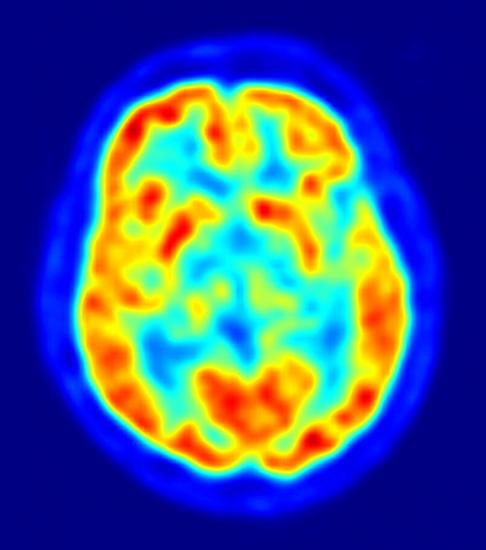Stephen C. Cunnane, Michael A. Crawford
Source - http://www.sciencedirect.com/science/article/pii/S0047248414001055
Journal of Human Evolution

PET image of the human brain showing energy consumption
Abstract
The human brain confronts two major challenges during its development: (i) meeting a very high energy requirement, and (ii) reliably accessing an adequate dietary source of specific brain selective nutrients needed for its structure and function. Implicitly, these energetic and nutritional constraints to normal brain development today would also have been constraints on human brain evolution. The energetic constraint was solved in large measure by the evolution in hominins of a unique and significant layer of body fat on the fetus starting during the third trimester of gestation. By providing fatty acids for ketone production that are needed as brain fuel, this fat layer supports the brain's high energy needs well into childhood. This fat layer also contains an important reserve of the brain selective omega-3 fatty acid, docosahexaenoic acid (DHA), not available in other primates. Foremost amongst the brain selective minerals are iodine and iron, with zinc, copper and selenium also being important. A shore-based diet, i.e., fish, molluscs, crustaceans, frogs, bird's eggs and aquatic plants, provides the richest known dietary sources of brain selective nutrients. Regular access to these foods by the early hominin lineage that evolved into humans would therefore have helped free the nutritional constraint on primate brain development and function. Inadequate dietary supply of brain selective nutrients still has a deleterious impact on human brain development on a global scale today, demonstrating the brain's ongoing vulnerability. The core of the shore-based paradigm of human brain evolution proposes that sustained access by certain groups of early Homo to freshwater and marine food resources would have helped surmount both the nutritional as well as the energetic constraints on mammalian brain development.